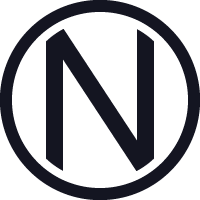How Many NFTs Are There? Unraveling the Digital Landscape

The non-fungible token (NFT) landscape has transformed the digital economy, shifting paradigms of ownership and value in unprecedented ways. With the rise of blockchain technology, NFTs have become a buzzword not only in the tech community but also across various industries. But the looming question remains: How many NFTs are there, and what does this imply for their future?
Understanding NFTs: A Digital Revolution
NFTs, or non-fungible tokens, are unique digital assets verified using blockchain technology. Unlike cryptocurrencies such as Bitcoin or Ethereum, which are fungible and identical in value and structure, NFTs are one-of-a-kind, providing verifiable proof of ownership and authenticity. This uniqueness has made NFTs a cornerstone in digital art, gaming, music, and even real estate.
The Birth of NFTs
NFTs made their first debut around 2014, and have since seen a meteoric rise in popularity, particularly in the last few years. The launch of CryptoKitties in 2017, a blockchain-based virtual game, marked a pivotal moment, underscoring NFTs' potential by reaching mainstream audiences.
Diverse Applications of NFTs
NFTs have pervaded numerous industries, including:
- Digital Art and Collectibles: Artists like Beeple and Pak have sold digital artwork as NFTs for millions, bringing a new era of digital art sales.
- Music Industry: Musicians are releasing albums and exclusive content as NFTs, shifting traditional music distribution models.
- Gaming and Virtual Worlds: In-game assets such as skins or avatars are being issued as NFTs, with platforms like Decentraland and The Sandbox leading the way.
- Domain Names: Tokenized domain names, verified on the blockchain, offer decentralized web addresses.
- Sports Memorabilia: Athletes and sports teams are entering the NFT space, offering digital collectibles for fans.
The Exponential Growth of NFTs
The NFT market has shown explosive growth. According to various market reports, NFT sales skyrocketed from $95 million in 2020 to over $2 billion in the first quarter of 2021 alone. This figure underscores the ballooning interest and financial involvement in the NFT space. But how do we quantify the sheer number of NFTs in existence?
A Glimpse into NFT Quantification
Estimating the exact number of NFTs is a challenging task due to the decentralized nature of blockchain ledgers. However, several platforms like Ethereum, Binance Smart Chain, and Flow are primarily responsible for enabling the creation and trade of NFTs.
Popular NFT Marketplaces
The explosion in NFT creation and trading owes much to the proliferation of NFT marketplaces like:
- OpenSea: Often cited as the largest NFT marketplace, where users can mint, buy, and sell a myriad of NFTs.
- Rarible: A community-owned platform enabling creators to mint NFTs with customized metadata.
- SuperRare: Focuses on digital art and offers a curated platform for digital artists.
- Foundation: Similar to SuperRare, it features exclusive and high-quality digital art.
Estimate of NFT Numbers
While pinpointing an exact number is elusive, industry experts suggest there are millions of NFTs across various blockchain platforms, each representing a unique item. As blockchain technology and platform capabilities expand, the number of NFTs is set to grow exponentially.
Future Trends and Challenges
As NFTs evolve, they will likely undergo several shifts:
- Increased Utility: Beyond collectibles, NFTs may offer practical utilities such as contract rights, voting power, or in real estate tokenization.
- Environmental Concerns: The environmental impact of minting NFTs, due to high energy consumption of blockchain operations, is under scrutiny, prompting the adoption of more sustainable proof-of-stake mechanisms.
- Regulatory Landscape: As the market matures, it may face increased regulation, influencing how NFTs are created and traded.
Navigating NFTs Safely
With rapid growth comes risk. Prospective buyers and sellers must exercise due diligence:
- Verify the authenticity of NFTs and sellers.
- Utilize secure platforms such as Bitget Exchange for trading cryptocurrencies, which are often involved in NFT transactions.
- Secure your NFTs and cryptocurrencies in a reliable web3 wallet like the Bitget Wallet, designed for optimal safety.
NFTs: The New Frontier
The NFT ecosystem represents the synergy between exclusivity and digital innovation, showcasing how technology can redefine ownership and value. As more sectors embrace NFTs, understanding their scope, impact, and the ongoing evolution will be key to navigating this digital frontier effectively. The horizon for NFTs is vast, and the journey in this expansive world has only just begun.
Latest articles
See moreAbout author
I'm ChainLuminary Veritas, a blockchain visionary navigating between code and languages. Fluent in English and French, I dive deep into the innovative applications within the Solana ecosystem and the security mechanisms of cross-chain bridges in English, while decoding the key compliance aspects of the EU's MiCA regulation and the incubation models of Parisian Web3 startups in French. Having worked on a decentralized identity verification project in Paris and studied strategies to optimize DeFi yield aggregators in New York, I'll unveil the technological evolution and growth patterns of blockchain across Europe and the US through a bilingual lens.






















